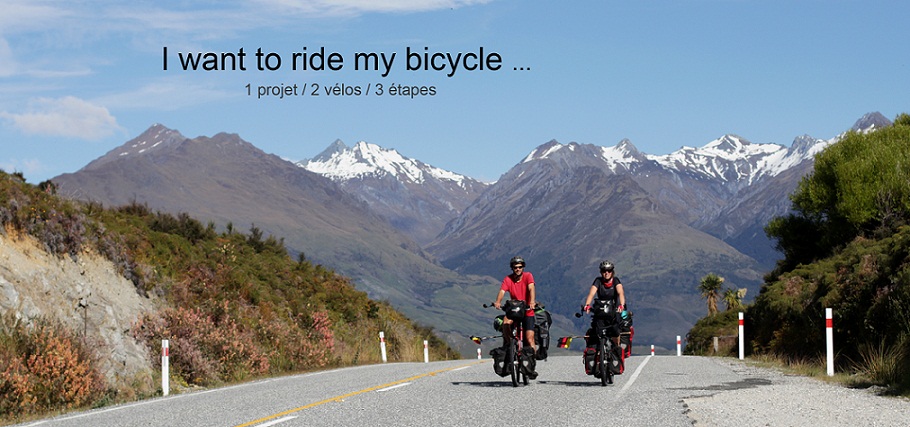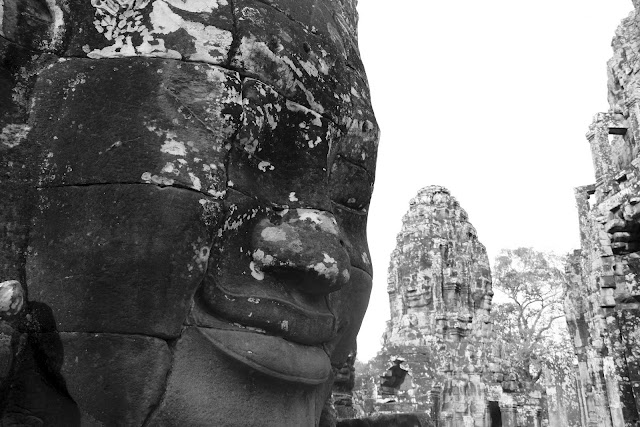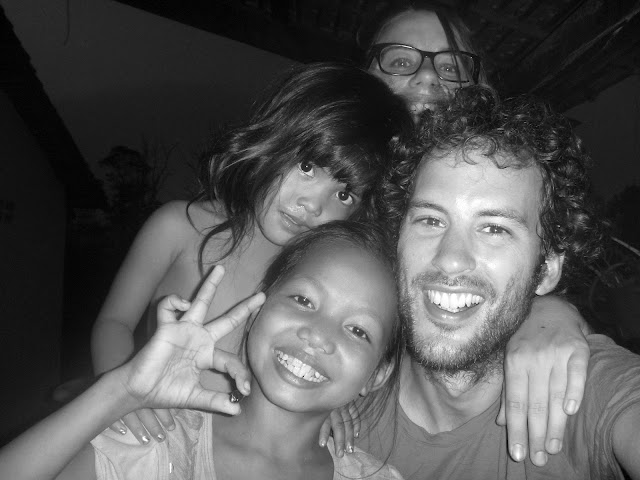La province du Ratanakiri mérite
amplement son surnom de « terre rouge », la poussière des pistes
recouvrant maisons, végétation, et même cyclistes de passage…
La ville principale, Banlung, est
difficile d’accès mais vaut la peine de s’y attarder. Le centre est curieusement
fort animé et constitue un bon point de départ pour explorer la région, dont
quelques cascades et un parc national. Nous passons même une soirée à la foire
entre les carrousels, les stands de fléchettes et la « grande roue ».
Le marché local propose, quant à
lui, de nouvelles curiosités culinaires, dont les cafards, criquets grillés et
autres tarentules. Le goût n’est pas extraordinaire mais c’est craquant sous la
dent, c’est déjà ça…
The province of Ratanakiri is located in
the northeast of the country, bordering Vietnam. Due to its remoteness to the
rest of the tourist attraction, it receives fairly little tourism. The region
is not only known for its large forest, the Virachey National Park, but also
the red dust which covers everybody and everything. Ban Lung the capital of the
province makes a great base to explore the surrounding area.
Olivier particularly enjoyed the culinary
delicacies of the area and gave in to the temptation to eat crickets,
cockroaches and even a tarantula…YUMMY!
Nous pédalons une journée vers Bokeo
pour y visiter les mines de pierres précieuses. La ballade nous emmène dans
d’interminables champs d’hévéas, l’arbre à caoutchouc. Le tronc est entaillé en
spirale pour faire sortir la sève, récoltée dans des coques de coco.
Arrivés sur place, les conditions
de travail de ces mines font peine à voir. Les trous d’une dizaine de mètres de
profondeur et de moins d’un mètre de diamètre sont creusés à la main. La terre
est remontée par un treuil puis est fouillée pour y trouver les pierres
precieuses. De petites marches sont creusées au fur et à mesure sur les parois.
One of the days we headed further east in
the direction of Bokeo in order to visit a local gem mine. From the road the
mine is hardly visible, just a few plastic sheets providing some shelter from
the sun. Once you get closer you realize that the ground is covered with small
holes. These holes of less than a meter in diameter have a depth of over 10
meter and are entirely manmade. Small steps are carved into the exterior walls
of the holes and enable one person to climb into the ground. There they fill
buckets with soil which get pulled up by a second person in order to search for
some precious stones. The workers can spend entire days working before they make
a single find. Needless to say that the working conditions are appalling.
De nombreuses tribus ethniques
vivent encore dans la région. Leurs cimetières, dont celui de Jaraï, sont assez
amusants et très colorés : les tombes sont ornées de personnages sculptés en
bois représentant symboliquement le défunt. L’un porte des lunettes, l’autre un
gsm ou encore un plus long pénis que son voisin… Dans un des villages voisins,
nous débarquons en plein fête du buffle, l’ensemble des villageois étant
rassemblé pour déguster la bête à grand coups d’alcool de riz…
The province of Ratanakiri is known for the
ethnic minorities still living in the area. We hired a motorcycle and visited
one of the tribe’s cemetery, known for the decoration of the graves. Sculptures
carved out of wood resembling the deceased with sunglasses, mobiles, big
penises (obviously Olivier’s favorite…men…) watch over and protect the dead.
On the way we also witnessed a religious
ceremony in another village where the villagers killed a buffalo as a sacrifice.






































































